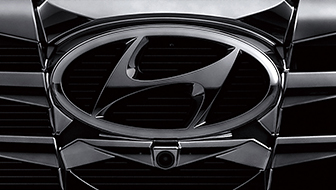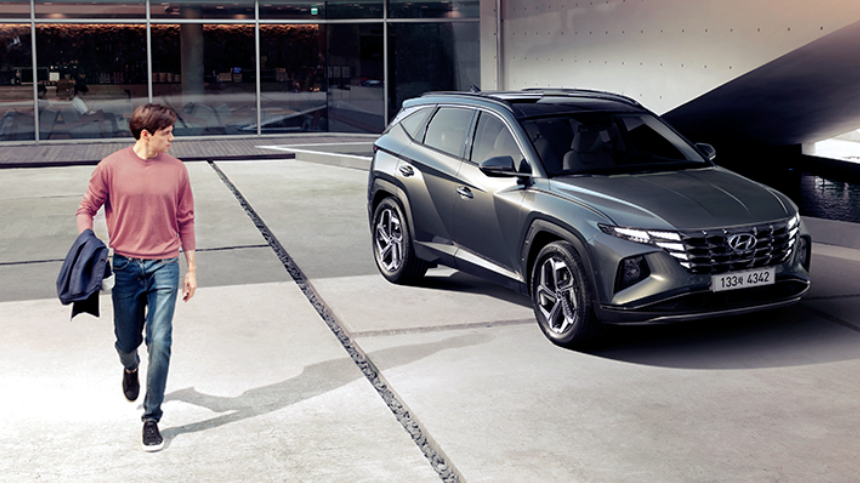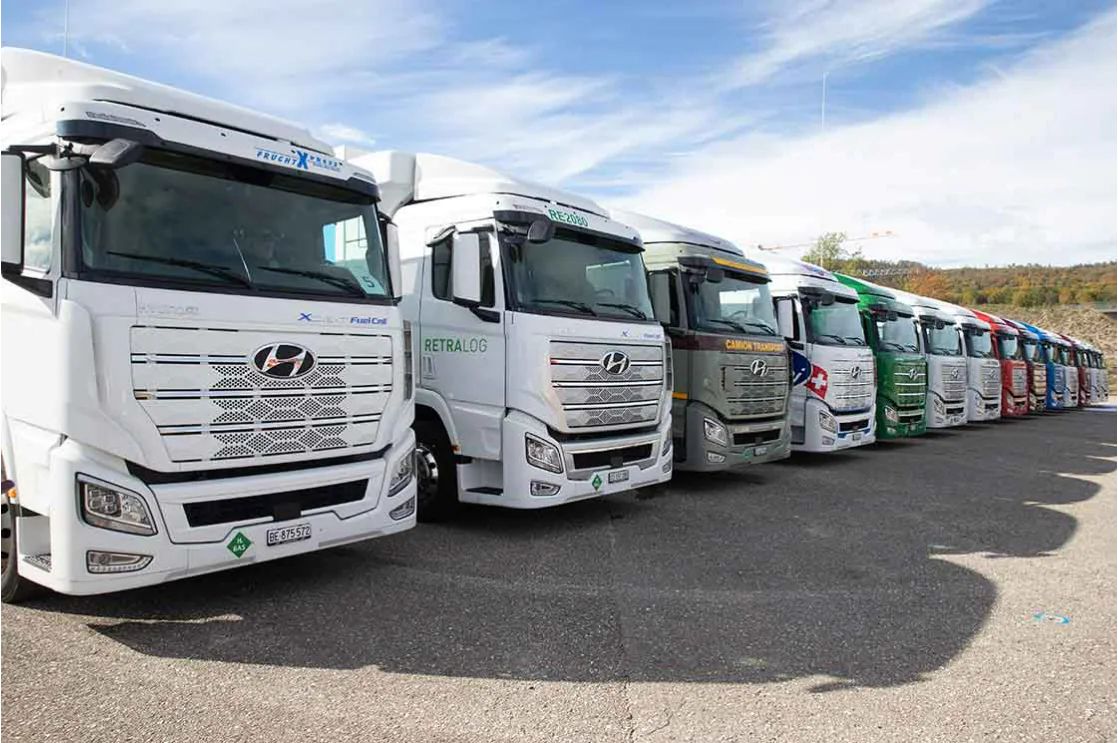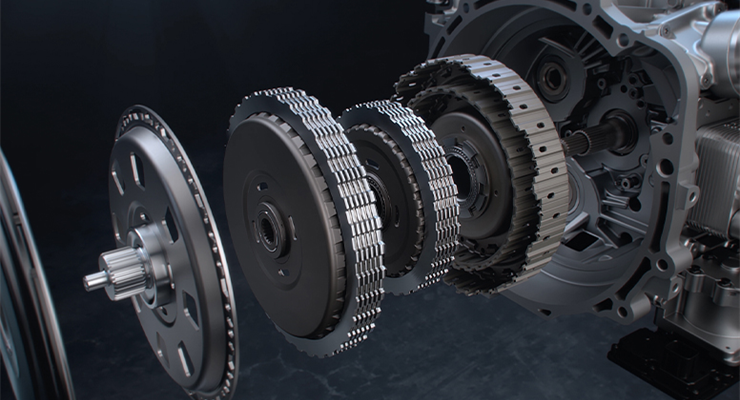The interior, exterior, color, and finishing materials are factors that determine user satisfaction. This is because the atmosphere and completeness of the cabin have a significant impact on the emotional quality. Recently, cars pay attention to these features and satisfy passengers with brand-new designs and unique materials. The fourth-generation Tucson has also strengthened the emotional quality with various attempts for the digital generation. The entire interior maximized refined style and comfort through organic design elements, and it combined colors and materials to emphasize the dynamic nature of the car. We met the researcher Choi Won-Seok and Yoon Da-Hye, the interior and color designer, and heard about the designing process of fourth-generation Tucson.
'Interspace', the interior design theme

Q. The interior of the fourth-generation Tucson gives the impression of being organically connected. Where did you get your inspiration from?
The compact SUV market, where Tucson competes, is in high demand worldwide, and competition is fierce. To strengthen Tucson's competitiveness, the company decided that it would be better to create a leading and unique image rather than following the trend, so we aimed at an interior that many people can agree on. By applying a 8-inch LCD screen to the Center fascia, it has prepared a future-oriented user environment and increased space utilization based on its enough wheelbase.
The fourth-generation Tucson interior design was inspired when the designer visited Niagara Falls in the U.S. Looking at the top of the waterfall, where the fall of water begins, and the bottom of the waterfall that accepts the stream, the image of space overlapping and creating a new space. It would be an interesting design to create two different elements that seem to meet to form a new space. So, the fourth-generation Tucson's interior design theme, "Interspace," has got this story behind. It is a compound word of "Intersection" and "Space," which also means technology and space combined.
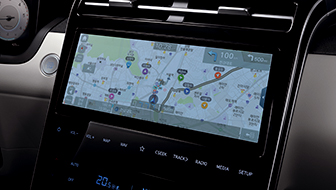
Q. What distinguishes the fourth-generation Tucson from its predecessor?
The interior design of the traditional SUV has focused on emphasizing its tough image and wide space. On the other hand, the new Tucson focuses on the harmony of functionality and sophistication. It also embodies an ergonomic design that is more comfortable to stay in. The key changes in the fourth-generation Tucson interior are the Center fascia, which has infotainment systems and air conditioning units, and the Center Console, which is a central storage box. These two are the most relevant of the design theme, 'Interspace' because two adjacent elements are organically connected.
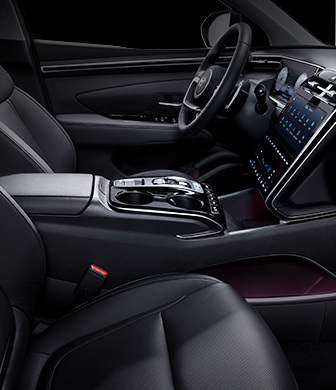
I think the center fascia and the center console are the parts that interact with the user through adjusting. Along with this, the design was not only for aesthetics but also for various criteria such as utility, surface, and convenience. The application of the Shift By Wire (SBW) also made the center console designed with the optimum angle and height that the driver feels comfortable when putting his arm on it.
Recently, cars work as smartphones and tablet PCs. It has implemented future-oriented center fascia design to satisfy the digital generation's needs who is familiar with IT technology.

Q. There seems to be a big change in the car interior designing. How did you reflect on this trend?
The design of cars also changes as time goes by. Recently, cars are becoming like smartphones and tablet PCs. This is because IT technologies that are developing day by day are being applied to cars. Speaking of which, the biggest change in the cabin is the center fascia, where various controllers such as air conditioning, audio, and monitor are located. The fourth-generation Tucson's center fascia supports more functions than before, but its style is simpler and easier to use. It has a black high-gloss finish and a 8-inch LCD screen, giving it a simple look like a tablet PC. The 10.25-inch open LCD instrument panel, which does not have a top cover, is also a result that reflects the latest design trends that have changed. Coated with a special film to prevent light reflection, the instrument panel increases concentration when driving, providing openness, and a future-oriented user experience.
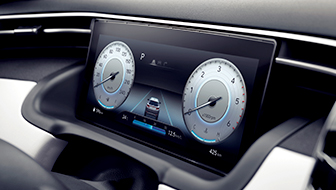
Q. The three-dimensional dashboard looks bold. How did you improve the design?
In terms of interior design, the boundaries between SUVs and sedans are gradually breaking down. The existing SUV design, which used to boast toughness, is only applied to some models, including off-road SUVs. The fourth-generation Tucson also tried to break away from the traditional SUV style. By implementing a timeless design, we wanted both drivers and passengers be noticed as the trend-setters. To that end, the dashboard, center fascia, and door trim were put together to create a cleaner image. Besides, silver garnishes starting from the door trim are naturally connected through the blast hole to the side of the center fascia, and the top of the dashboard is gently wrapped around the passenger with a curve. I wanted to convey warm welcoming as if a boyfriend were welcoming his girlfriend.
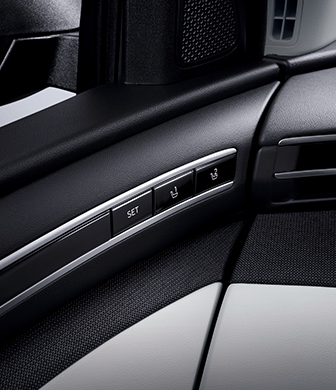
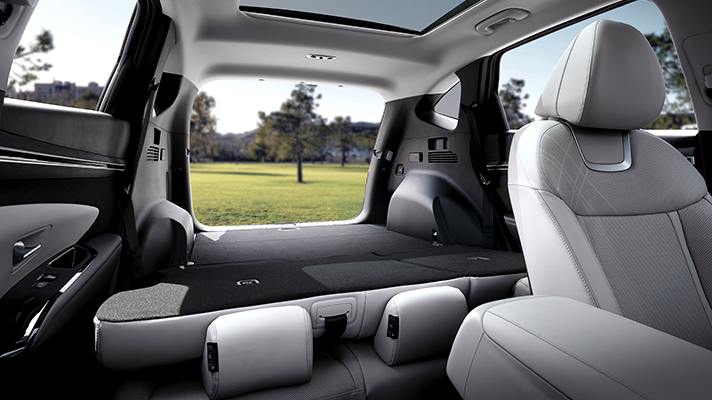
Q. The vents have become integral to the dashboard. I don't think the design work would have been easy.
The 4th generation Tucson's air vent is applied as if it were a decorative element of a dashboard, which gives a great sense of unity and excellent blast performance. It is very difficult to satisfy both style and function. This is because not only does the wind sound louder but also condensation occurs when the air vent is made thin. Besides, the design of the vents should be considered to avoid interference with other equipment, including passenger airbags. The fourth-generation Tucson’s air vent has been repeated countless times to maximize its function while maintaining its beautiful form.

Q. The fourth-generation Tucson has significantly expanded its interior space. What are the characteristics of the second row and trunk space?
Recently, the number of customers enjoying camping increased, and they prefer bigger vehicles. For this reason, the fourth-generation Tucson has developed a basic model and a long-wheelbase model, and a long-wheelbase model has been released in Korea. On the other hand, many horizontal shaping elements were used to help passengers sympathize with the large space. A case in point is the silver garnishes attached to the interior of the back door. The long, thin formations of decorative materials emphasized the maximum level of rear-seat space in its class. The trunk has a spacious cargo space capacity of 1,095 liters. At the same time, it has prepared various convenience features that improve loading and unloading. For the second-row backrests, it is designed to fold easily with a lever. The second-row seatback is also useful for sleeping inside as it would make the floor flat.
From color to material: the color designer talks about how the fourth-generation Tucson attracts us

Q. Which body shade highlights the dynamic image of the fourth generation Tucson?
The fourth-generation Tucson is equipped with bold designs that were not seen in previous models. Therefore, I thought that colors that accentuate the dynamic Tucson image would be more suitable than the high-color that conventional SUVs enjoy. The body shade "Amazon Gray," which represents the fourth-generation Tucson, is a green-colored medium-color. Green is still unfamiliar in the automotive field, but it is widely applied in other products such as interior design and fashion. Amazon Gray has blue and gold pearls based on hard metal-like aluminum particles. This allowed us to dramatically express the amount of light directly reflected and the area where the iron plate bends. Amazon Gray, which maximizes the appeal of exterior design, also matches the product characteristics of a car that can last for a relatively long time once purchased. Not only can customers who carefully consider colors easily approach it, but it also has the charm of giving them a fresh feeling even over time.
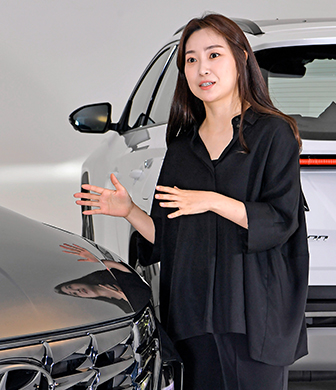
Amazon Gray attracts customers by indirectly conveying the vast and clear nature, and the sense of adventure.
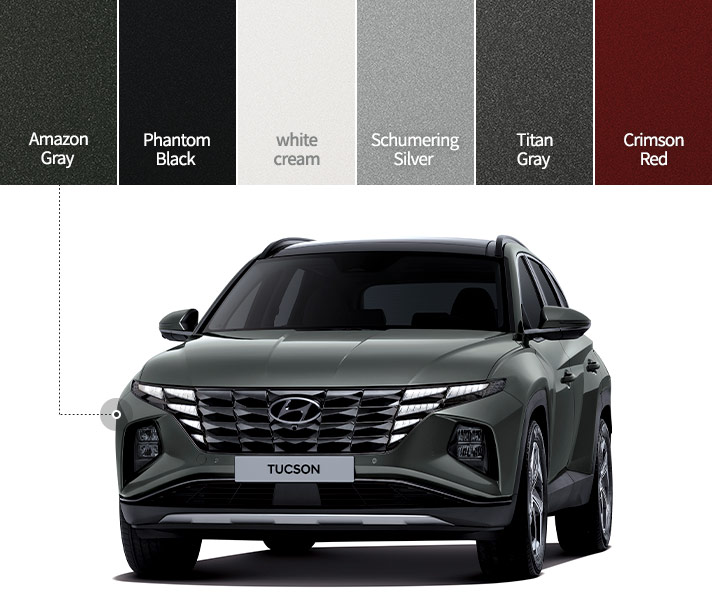
Q. Why did you name it Amazon Gray?
Body shade is a very important factor to consider with design when purchasing. Therefore, a more refined approach was needed to select the names of colors. Rather than directly talking about colors, they judged that words that conjure up a particular image would stimulate the customer's sensibility more. Amazon is the world's largest rainforest. Even without the word ‘green’, it naturally reminds us of a deep blue rainforest. You can approach customers attractively by indirectly conveying the vast nature's cleanliness and the sensibility of adventure. In other words, color names definitely act as a medium for conveying emotional senses.
Q. How does the color that you focus on differ depending on the sales market?
The fourth-generation Tucson's global image color is Amazon Grey. However, we are planning to apply additional unique colors considering the characteristics of customers in different regions. For example, the North American market traditionally prefers blue and red. To meet these customers' tastes and needs, the company has developed Intense Blue, which has high attention by adding pearls to high-color. Considering that European markets prefer relatively calm colors, they have developed a new color with pearls based on low-color blue. Active color development according to market characteristics is being carried out in various models as well as 4th generation Tucson.
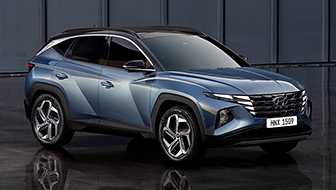
Q. The radiator grille and daytime running lamps were expressed in a sense. The design difficulty must have been very high.
There have been cases of applying dark chromium to radiator grille before, but it is the first time to try it on daytime running lights. Daytime running lights look like radiator grille, usually finished in dark chrome. However, when the engine is started, it functions as a light and gives a different image. The weekly driving lights and radiator grille, which are applied with the "parametric jewelry pattern," the keynote of Hyundai Motor Company's design, have images of cross-sectional gems of countless glittering crystals. At some point, however, the hidden light turns on, revealing a strong presence. I think this is the moment when you can experience the dramatic effects of technology combined with emotions. In particular, it was difficult to implement the function of daytime running lamps that transmits light through dark chromium.
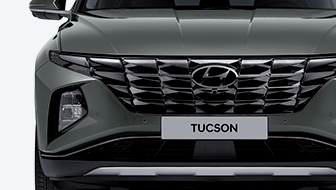
Q. Which part did you put the most effort into, when choosing colors and material?
The fourth-generation Tucson's interior is equipped with various high-tech convenience specifications, but it not only delivers a simple image but also a comfortable atmosphere. This is due to the application of "melange" fabrics that deliver warm images to the interior materials leading from doors to dashboards. It also emphasized the sense of space through the form of silver garnishes surrounding the passengers. The silver decorative material is designed with a thickness that maximizes simplicity but luxury and applies high-quality metal paint to convey the sophisticated metal feel when viewed or touched. The interior color is a color composition that can capture the hearts of users expressing their character, with these colors: "Dark Blue One-Tone," "Black," "Grey Two-Tone" and "Brown" featuring contrast.
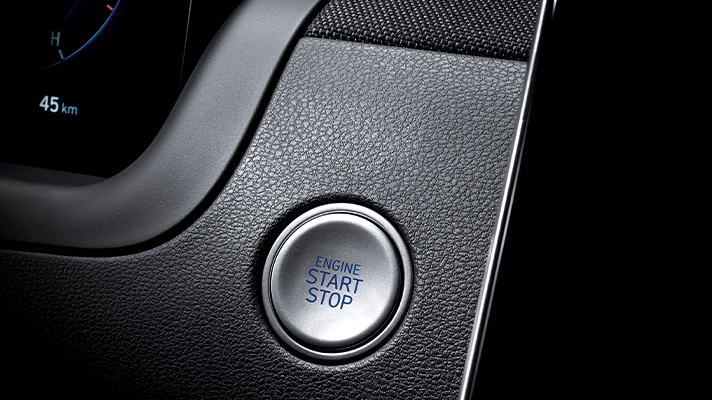
Q. Is there a color or material different from that of global competitors?
The strength of the 4th generation Tucson is that it is a color that actively reflects the lifestyle of global customers and more luxurious material. From the initial stage of design, the company surveyed trends with foreign design studios such as the U.S. and Europe and developed new exterior and interior colors that are specialized for each country by reflecting them appropriately in color and material design. Also, the interior materials with soft-touch are placed in dashboards and door trims, which are the core of interior design, to emphasize the luxurious feel. In terms of appearance, front-end design, which uses dark chromium materials boldly, is a different element from competitive models.
Q. Which colors and materials maximize the emotional quality of the fourth generation Tucson?
To further enhance user satisfaction with indoor quality, "Pad print" techniques and textile materials were used in dashboards and door trims. Pad printing is a method of printing specific colors and patterns on the surface of the interior material, which makes the plastic interior material more luxurious. Also, fabric embedding materials were applied to areas directly touched by human hands or bodies to maximize soft and warm emotions.
Q. The car seat is the part that has direct contact with the body. It would have been difficult to choose the right patterns and textures.
When I first bought a car, I was looking at dashboards and center fascia. But when I get into the car after getting used to it, I keep an eye on my seat. Therefore, designing a sheet is very important. Because we have to give a fresh image and comfort at the same time. The fourth-generation Tucson has a sheet design that is stylish, subtle, and original. The design pattern perforation was used for the natural leather specification and the "embossed pattern" was used for the artificial leather specification, while the lines crossing over the surface of the sheet were designed similar to character lines crossing the body. It also used soft yet durable leather to deliver a pleasant feel when it touched the body.
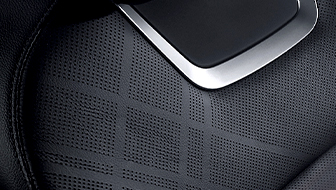
Q. What is your favorite part of participating in design development?
Personally, I like Hyundai Motor Company's H emblem with dark chromium. Changing the emblem to dark chrome was not an easy decision. There were many voices of concern as it symbolizes the brand. However, the dark Chrome emblem was completed with details that made the fourth-generation Tucson stand out even more by maximizing the sense of unity of radiator grille and daytime running lamps.
